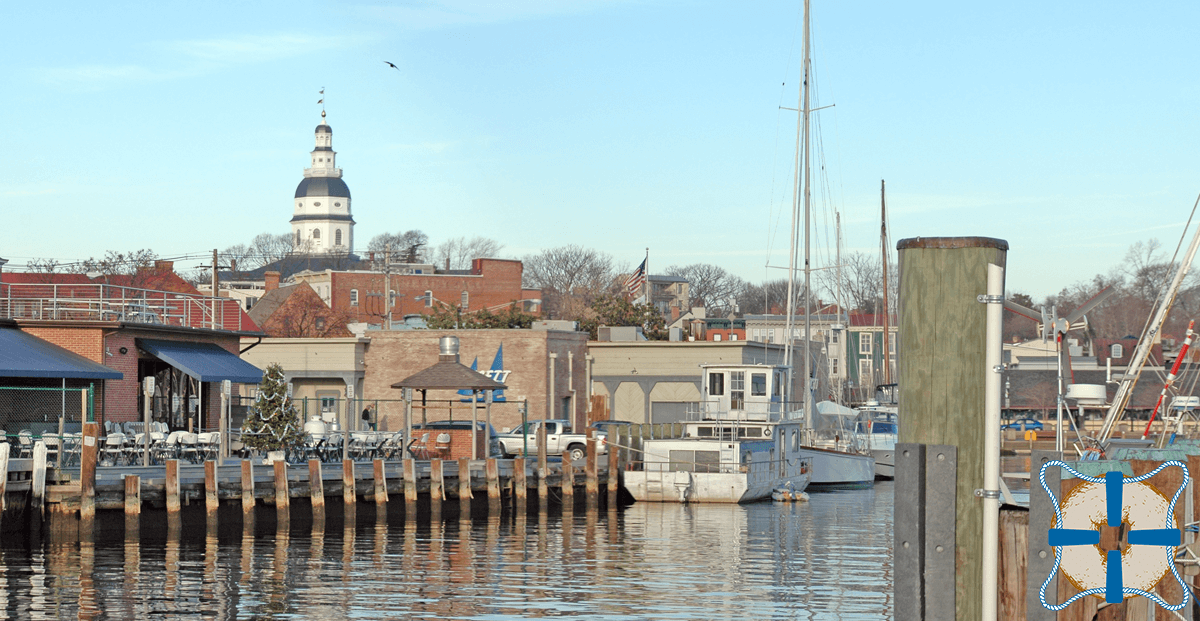The Annapolis Tea Party and the Burning of The Peggy Stuart
Surely you have heard the tale of the Boston Tea Party? How, on December 16, 1773, at Griffin’s Wharf in Boston, colonists, angry at Britain for imposing unfair taxes, dumped 342 chests of British tea into the harbor. But, did you know that in 1774, one of the most dramatic protests by frustrated colonists played out in our own backyard? That’s right! It all happened here in Annapolis Harbor. So, pull up a chair, sit back, and relax. Grab a snack (like a bagel, duh) and listen as we tell the tale of the Annapolis Tea Party and the burning of the Peggy Stuart.

Why Were the Colonists So Upset?
Colonists were infuriated that taxes were being passed on imports without any consultation with their colonial legislatures. Thus the phrase “no taxation without representation” was born. The Stamp Act was the first of these tax acts, later repealed in 1766 after widespread protest. Subsequently, British Parliament passed The Tea Act, in 1773. its goal was reducing the huge tea surplus of the struggling East India Company. Also, it aimed at thwarting the black market for duty-free tea smuggled into the colonies. As many other colonial groups, Annapolis in a show of solidarity in 1773, enacted a ban on tea and other goods that carried import taxes.

What Was Up with the Peggy Stewart?
On October 14, 1774, the Peggy Stewart docked in the Annapolis port. The brigantine arrived in the port from London, England, stocked with consigned goods for the Thomas Charles Williams & Co.. The cargo including tea smuggled and disguised as packages labeled as linen and indentured servants. Here’s the thing, and why this was such a big deal. A few years before, Annapolis set a precedent when its customs officer refused to allow ships to unload any portion of their cargo without first paying the taxes due. Now, most of the cargo on the Peggy Stewart consisted of those 53 indentured servants. The captain did not want to risk the health of the servants, and, furthermore, Williams’ business partners began to have second thoughts about the smuggled tea. So, the ship’s co-owner and local merchant, Anthony Stewart paid the taxes and got the human cargo ashore, but left the tea onboard.
Here’s Where It Gets Hairy
It got out about the presence of the tea onboard, and the public was furious. Handbills were made and handed out to rouse the public. Angry mobs gathered outside Stewart’s home. Some suggested they tar and feather Stewart. Williams and his business partners were threatened with lynching. Their store and homes were also in jeopardy of being destroyed. After agonizing over what to do, to avoid any turmoil, the partners decided that to appease the angry colonists, they would burn the Peggy Stewart with the tea in it. And on October 19, 1774, they did just that.
The Moral? Don’t Mess with Annapolis
Despite the partners’ efforts to quell the outrage, their positions as British loyalists were solidified after these events. Stewart was forced to flee Annapolis and his property seized. Eventually, he escaped to Nova Scotia. However, it is said that he never quit petitioning the British government for compensation for his losses. His business partner, Thomas Charles Williams, was not unscathed, either. While the Williams brothers bore the brunt of the punishment in Annapolis, the news of Thomas’ treachery quickly spread across the colonies. A bounty was even placed on his head! He eluded capture for three months. But, he eventually turned himself in signing a letter confessing his crime and was “forgiven.” However, when it came time for him to bear arms against the British he disappeared, never to be heard from again.
Bet you didn’t know that Annapolis played such a scandalous role in the American Revolution! This year as you and your family kick back and enjoy the July 4th holiday, reflect on the steadfastness of Annapolitains.
At Naval Bagels we love everything about Annapolis! Really want to impress friends and family? Pick up a bag of our bagels and some cream cheese. And, as if that wasn’t enough, share this rousing tale of The Annapolis Tea Party of 1774!

